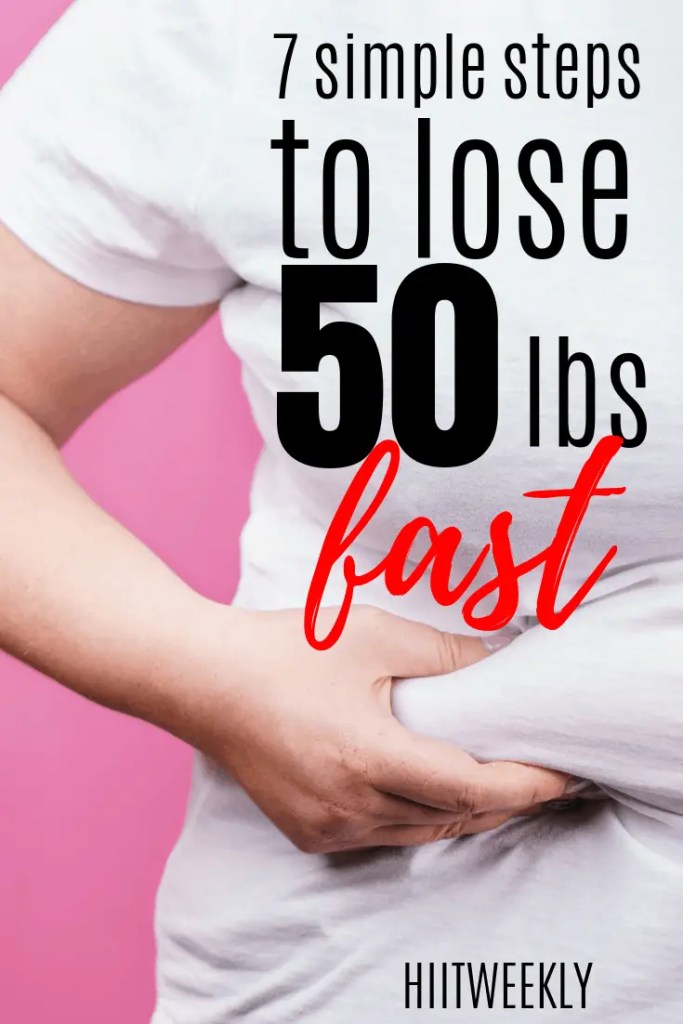Losing 50 pounds in 3 months is a bold and ambitious goal. While it’s not impossible, achieving this requires serious dedication, strategic planning, and a holistic approach to both diet and exercise. Before diving in, it’s essential to understand that rapid weight loss should be approached cautiously to ensure you maintain overall health and well-being. This guide will walk you through the steps, best practices, and essential tips for achieving significant weight loss within a short time frame.

Is It Possible to Lose 50 Pounds in 3 Months?
The short answer is yes, but with several caveats. Losing 50 pounds in 3 months requires a drastic calorie deficit and an intense fitness routine. Health professionals typically recommend losing 1 to 2 pounds per week, which would translate to 12 to 24 pounds over 3 months. However, with the right plan, losing up to 50 pounds in that time is possible for some, though it’s important to monitor your health and avoid extreme methods that could lead to nutritional deficiencies or other health problems.
The Science of Weight Loss
At its core, weight loss boils down to consuming fewer calories than you burn. To lose 1 pound, you need to create a 3,500-calorie deficit. Therefore, losing 50 pounds would require a total calorie deficit of 175,000 calories, which breaks down to around 14,500 calories per week or approximately 2,100 calories per day.
Creating such a large calorie deficit requires a combination of dietary changes and increased physical activity. It’s not only about eating less, but eating smart, while incorporating an exercise routine that helps you burn as many calories as possible.
Steps to Lose 50 Pounds in 3 Months
1. Adopt a Calorie Deficit Diet
The most crucial part of any weight loss plan is maintaining a calorie deficit. Start by calculating your daily calorie needs using a calculator that factors in your weight, height, age, and activity level. Once you know how many calories you need to maintain your current weight, aim to reduce your intake by 500 to 1,000 calories per day, which can result in losing 1 to 2 pounds per week.
Sample Diet Plan:
- Breakfast: Greek yogurt with mixed berries (150-200 calories)
- Lunch: Grilled chicken salad with light vinaigrette dressing (300-350 calories)
- Dinner: Salmon with steamed vegetables and quinoa (400-500 calories)
- Snacks: Raw veggies or a small handful of nuts (100-150 calories)
Focus on consuming whole foods such as lean proteins, vegetables, fruits, and whole grains while avoiding processed foods, sugary snacks, and refined carbohydrates. Intermittent fasting, particularly the 16:8 method, where you fast for 16 hours and eat during an 8-hour window, has proven effective for many in reducing calorie intake and aiding fat loss.
2. Exercise Regularly
Exercise is another critical component for achieving rapid weight loss. Incorporate a mix of cardio and strength training to maximize your calorie burn.
-
Cardio: Aim for at least 30-60 minutes of moderate to high-intensity cardio (such as running, cycling, or swimming) 5-6 days a week. High-Intensity Interval Training (HIIT) is particularly effective at torching fat and keeping your metabolism elevated even after you finish exercising.
-
Strength Training: Building muscle through weightlifting or resistance training is essential for boosting your metabolism. Incorporate strength training 3-4 times a week to target all major muscle groups.
3. Increase Protein and Fiber Intake
Filling your diet with high-protein foods and fiber can help you stay fuller longer, making it easier to maintain a calorie deficit. Protein helps preserve muscle mass during weight loss, while fiber slows digestion, helping to regulate hunger and promote satiety.
Sources of protein include lean meats, eggs, fish, tofu, and legumes. For fiber, add fruits, vegetables, whole grains, and beans to your diet.
4. Stay Hydrated
Drinking plenty of water is crucial for weight loss. Water helps boost your metabolism, cleanse your body of waste, and acts as an appetite suppressant. Aim to drink at least 8-10 glasses of water per day. Try drinking a glass before meals to help control hunger and prevent overeating.
5. Track Your Progress
Keeping track of what you eat and your daily activities is essential for staying on target. Use a journal or an app like MyFitnessPal to log your meals and exercises. Monitoring your progress allows you to make adjustments as needed to stay on track.
6. Prioritize Sleep and Stress Management
Getting adequate rest is crucial for effective weight loss. Lack of sleep can disrupt your hormones, leading to increased hunger and cravings. Aim for 7-9 hours of quality sleep per night to ensure your body is well-rested and functioning optimally.
Additionally, managing stress is important, as high-stress levels can trigger emotional eating and cravings for unhealthy foods. Consider incorporating relaxation techniques like meditation, yoga, or deep breathing exercises to reduce stress levels.

FAQs About Losing 50 Pounds in 3 Months
1. Is it possible to lose 50 pounds in 3 months?
Yes, it’s possible to lose 50 pounds in 3 months, but it requires a very strict calorie deficit, intense exercise, and a consistent routine. However, such rapid weight loss should be done under medical supervision to ensure you’re staying healthy and avoiding muscle loss or nutrient deficiencies.
2. How many calories do I need to cut to lose 50 pounds?
To lose 50 pounds in 3 months, you need to create a calorie deficit of approximately 2,100 calories per day. This can be achieved by reducing your calorie intake and increasing your physical activity.
3. What is the best diet for losing 50 pounds?
A high-protein, low-carb diet is often effective for rapid weight loss. This includes lean proteins, vegetables, healthy fats, and limited refined carbohydrates. Intermittent fasting can also be helpful in managing calorie intake.
4. How much exercise do I need to lose 50 pounds in 3 months?
To maximize weight loss, you should aim for at least 5-6 days of cardio and 3-4 days of strength training per week. High-Intensity Interval Training (HIIT) can also help accelerate fat loss.
5. How long should I walk each day to lose 50 pounds in 3 months?
Walking for at least 60-90 minutes per day can significantly contribute to weight loss. Aim for 10,000 steps or more each day, combined with a calorie-restricted diet.
6. Will I lose muscle while trying to lose 50 pounds?
Rapid weight loss can result in muscle loss, especially if you’re not eating enough protein or strength training. To preserve muscle mass, include strength training and consume sufficient protein in your diet.
7. Can intermittent fasting help me lose 50 pounds?
Yes, intermittent fasting can help reduce calorie intake by limiting the time you spend eating. The 16:8 method—fasting for 16 hours and eating within an 8-hour window—is particularly effective for some individuals.
8. What are the risks of losing 50 pounds in 3 months?
Losing weight too quickly can lead to issues like muscle loss, nutrient deficiencies, and gallstones. It’s essential to monitor your health throughout the process and consult a healthcare professional if needed.
Conclusion
Losing 50 pounds in 3 months is a challenging but achievable goal with the right combination of diet, exercise, and consistency. By maintaining a significant calorie deficit, increasing your physical activity, and prioritizing overall wellness, you can see substantial progress. However, always prioritize your health and ensure any weight loss plan is sustainable and safe in the long run.